Introduction
Wet markets, vibrant hubs of culinary activity, have long served as the backbone of fresh food retail in many cultures. Among the most dynamic sections of these markets are the fish stalls, where a kaleidoscope of aquatic life is displayed, each species offering unique flavors, textures, and nutritional profiles. From the humble carp to the prized salmon, the variety of fish available in wet markets reflects regional tastes, ecological diversity, and the timeless human connection to aquatic resources. This article delves into the most common fish varieties found in wet markets worldwide, exploring their biological characteristics, culinary applications, and cultural significance. By understanding these species, consumers can make informed choices that balance taste, nutrition, and sustainability.
Common Freshwater Fish
Freshwater fish dominate wet markets in inland regions and areas far from coastal waters. Their adaptability to ponds, rivers, and lakes makes them accessible to communities worldwide.
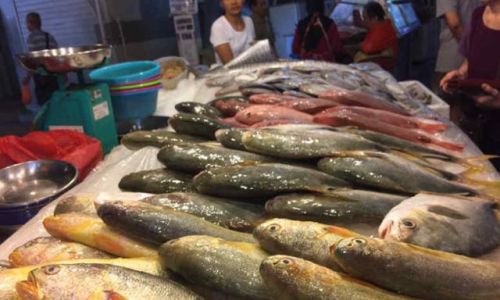
1 Carp (Cyprinus carpio
Carp, a staple in Asian and Eastern European cuisines, is instantly recognizable by its stout body, whisker-like barbels, and shimmering scales. Common varieties include the silver carp, grass carp, and koi (ornamental carp). Carp’s firm, mild flesh lends itself to stewing, frying, or pickling. In China, it is a symbol of prosperity, often served whole during festivals. Nutritionally, carp is rich in omega-3 fatty acids, vitamin B12, and selenium. However, its muddy taste, a result of its bottom-feeding habits, requires thorough cleaning and marinating.
2 Tilapia (Oreochromis spp.)
Tilapia’s rise to global popularity stems from its hardiness and mild flavor. Native to Africa but now farmed worldwide, this fish has a sleek, laterally compressed body and a reputation as “aquatic chicken” for its versatility. Wet market vendors often sell whole tilapia or fillets, which grill, bake, or pan-fry well. Tilapia is low in fat and high in protein, making it a diet-friendly option. Controversies around farmed tilapia’s environmental impact, however, highlight the need for sustainable sourcing.
3 Catfish (Ictalurus spp. and Clarias spp.)
Catfish, with their slippery, scaleless bodies and barbels resembling cat whiskers, thrive in muddy freshwater environments. Channel catfish (North America) and African catfish are prized for their moist, sweet flesh. In Southern U.S. cuisine, catfish is deep-fried in cornmeal batter, while Southeast Asian dishes incorporate it into spicy soups. Catfish is a good source of vitamin D and heart-healthy fats, though its bottom-feeding nature may concentrate contaminants if sourced from polluted waters.
4 Trout (Oncorhynchus mykiss
Rainbow trout, a cold-water favorite, boasts pinkish flesh and a delicate, nutty flavor. Farmed extensively, it is a wet market mainstay in temperate regions. Trout’s tender texture makes it ideal for baking, smoking, or grilling. Rich in omega-3s and potassium, it supports heart and brain health. Anglers and chefs alike appreciate its versatility, though wild-caught trout may carry a premium due to its perceived superior taste.
Common Saltwater Fish
Coastal wet markets showcase the ocean’s bounty, with species ranging from oily sardines to meaty cod. These fish reflect marine ecosystems’ biodiversity and fishing communities’ livelihoods.
1 Salmon (Salmo salar and Oncorhynchus spp.)
Salmon’s vibrant orange flesh and rich flavor make it a global icon. Species like Atlantic salmon (farmed) and wild Pacific salmon (sockeye, coho) dominate wet markets. Salmon’s high omega-3 content and buttery texture suit sushi, grilling, or smoking. However, overfishing and aquaculture’s environmental footprint have sparked debates about sustainability, pushing consumers toward certified eco-friendly sources.
2 Cod (Gadus morhua
Cod, with its white, flaky flesh and mild taste, is a culinary chameleon. Atlantic cod, once abundant, now faces strict quotas due to overfishing, while Pacific cod remains a sustainable alternative. Wet markets often feature cod fillets or loins, perfect for fish and chips, soups, or casseroles. Cod is a lean protein source but lacks the omega-3 punch of oily fish, prompting some to pair it with fatty sides.
3 Mackerel (Scomber scombrus
Mackerel’s oily, robust flesh and dark stripes distinguish it from paler relatives. Found in temperate and tropical waters, it is often sold whole or gutted. Smoking, grilling, or marinating mackerel enhances its flavor, while its high omega-3 and vitamin D content makes it a nutritional powerhouse. However, its short shelf life requires freshness checks—clear eyes and firm flesh are key indicators.
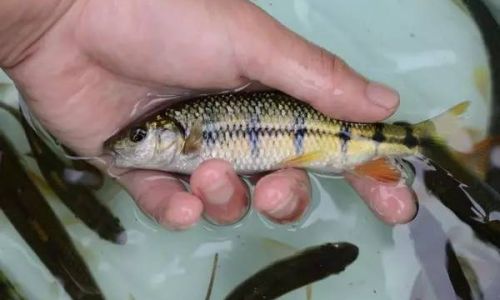
4 Sardines (Sardina pilchardus
Tiny but mighty, sardines pack a punch of flavor and nutrients. These small, silver fish are often sold canned, but fresh sardines grilled whole are a Mediterranean delight. Their high calcium (from edible bones) and omega-3 levels support bone and heart health. Sardines’ rapid reproduction makes them resilient to fishing pressure, though bycatch concerns persist in industrial fisheries.
5 Red Snapper (Lutjanus campechanus
Red snapper’s pinkish-red skin and sweet, nutty flesh make it a prized catch. Common in tropical and subtropical wet markets, it is often sold as fillets or steaks. Its firm texture holds up to grilling or baking, while its mild taste pairs well with citrus or herbs. Overfishing has depleted wild populations, so consumers should seek sustainably sourced or farm-raised alternatives.
6 Sea Bass (Dicentrarchus labrax
European sea bass, with its silvery body and delicate flavor, is a Mediterranean favorite. Farmed varieties are increasingly common, offering a milder taste than wild counterparts. Sea bass’s versatility shines in recipes like whole roasted fish with herbs or pan-seared fillets. Its low calorie and high protein content align with health-conscious diets, though farmed bass may contain higher levels of omega-6 fats depending on feed.
7 Flounder (Paralichthys spp.)
Flounder’s flat, asymmetrical body and mild, sweet flesh make it a delicate seafood option. Often sold as fillets, it is ideal for light preparations like poaching or baking in parchment. Flounder’s low fat content suits low-calorie diets, but its thin flesh requires gentle cooking to avoid drying out. Sustainability concerns vary by species and fishing method, with some flounder populations facing habitat loss.
Other Notable Species
Beyond freshwater and saltwater mainstays, wet markets may feature lesser-known but equally fascinating fish.
1 Eel (Anguilla anguilla and A. japonica
Eels’ snake-like bodies and rich, fatty flesh divide opinion but are beloved in many cuisines. European and Japanese eels, often sold as live or cooked whole, are prized for unagi (grilled eel) in sushi or jellied eels in British pubs. Eels’ high omega-3 and vitamin A content comes with sustainability caveats; many populations face decline due to habitat destruction and overfishing.
2 Anchovies (Engraulis encrasicolus
Anchovies’ small size and intense flavor make them a pantry staple, though fresh anchovies grace wet markets in Mediterranean and Asian regions. Their briny, umami-rich flesh is perfect for salads, sauces, or grilling. Anchovies are nutrient-dense, offering calcium, iron, and niacin. Overfishing and bycatch in industrial trawlers threaten some stocks, but artisanal fisheries provide sustainable options.
3 Herring (Clupea harengus
Herring’s oily, silvery flesh and historical significance (think pickled herring in Scandinavia) make it a wet market staple. Sold whole, smoked, or pickled, it is a vitamin D and omega-3 powerhouse. Herring’s schooling behavior makes it vulnerable to overfishing, though responsible management has aided recovery in some regions.
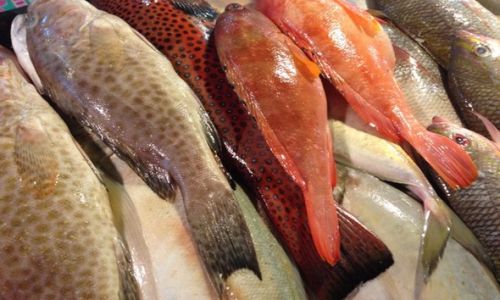
Nutritional Benefits of Fish Consumption
Fish’s reputation as a health food stems from its unique nutritional profile. Regular consumption is linked to reduced heart disease risk, improved brain function, and enhanced infant development. Oily fish like salmon and mackerel provide EPA and DHA omega-3s, crucial for reducing inflammation and supporting cognitive health. Lean fish, such as cod and tilapia, offer high-quality protein with fewer calories. Fish also supplies essential minerals like iodine, selenium, and zinc, often lacking in modern diets. However, mercury and PCB concerns in large predatory fish (e.g., tuna, swordfish) necessitate moderation, especially for pregnant individuals.
Sustainability and Ethical Considerations
The environmental impact of fishing varies drastically by species and method. Overfishing, habitat destruction, and bycatch plague wild fisheries, while aquaculture brings issues like pollution and disease. Consumers can make ethical choices by:
- Seeking eco-certifications (e.g., MSC for wild-caught, ASC for farmed).
- Favoring locally caught or farmed species to reduce carbon footprints.
- Avoiding endangered species (e.g., bluefin tuna, some sharks).
- Supporting small-scale fisheries that prioritize sustainability.
Tips for Selecting and Storing Fish
Freshness is paramount when buying fish. Look for:
- Clear, bulging eyes (not cloudy or sunken).
- Firm, shiny flesh that springs back when pressed.
- A mild, briny scent (not fishy or ammonia-like).
- Bright red gills (for whole fish).
Store fish on ice in the refrigerator and consume within two days. For freezing, wrap tightly to prevent freezer burn.
Conclusion
Wet markets are gateways to the ocean’s and rivers’ treasures, offering a sensory feast of sights, smells, and tastes. The fish within these markets—from the humble carp to the majestic salmon—connect us to centuries-old culinary traditions and the delicate balance of aquatic ecosystems. By choosing wisely, consumers can savor these bounties while safeguarding their future. As global appetites evolve, the wet market remains a testament to the enduring bond between humans and the aquatic world.

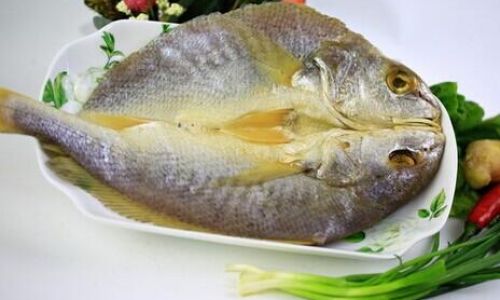


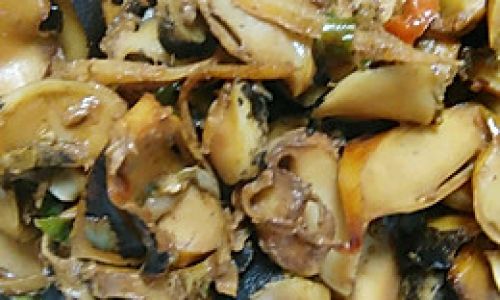
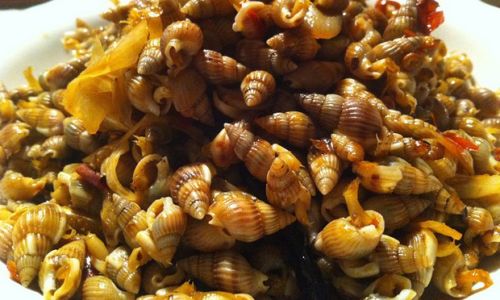
0 comments